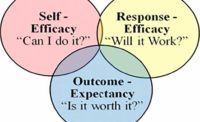Do you coach with feeling?
It¿s a difficult level to attain, but one that can do wonders to facilitate mutual learning and behavioral improvement. Leaders who demonstrate empathy ¿ sincere understanding and appreciation for other people¿s circumstances ¿ are more likely to be followed. And their directions, based on an empathic diagnosis of the situation, are more effective.
Conversations at this level are not efficient, but they are effective. They require patience. It takes time to learn, mostly through questioning and listening, what it¿s like to be in the other person¿s situation. Then the objective shifts to designing an action plan that fits the circumstances. This requires mutual understanding. Everyone who is taking part in the conversation must have the same feeling for what the circumstances are. Then, if everyone states their commitment to follow through with the plan, you¿ve had a most effective conversation.
This is easier said than done, you might say. You¿re probably right. But the payoff can be great: When we show more empathy in our conversations, we have more impact in improving attitudes and behaviors. When we show others, through empathic listening, that we really understand their position, we maximize the chance of progress.
Achieving empathy
Here¿s how to achieve an empathic level of awareness and appreciation:- Take off your blinders. Minimize the reactive filters that bias conversations. They are barriers to listening intently and proactively to another person.
- Ask more questions.This is how you truly understand the other person¿s position and eventually diagnose the problem.
- Listen for more than words. Not only must we hear every word, but we must also be sensitive to feelings, passion, and commitment. This comes across as much in body language and manner of expression as in words themselves. Listen for more than words when workers give evaluations of their at-risk behavior and offer recommendations for self-improvement. Listen for feelings or emotions that reflect concern for errors and commitment to change.
- Use your imagination. When you observe another person¿s work practices, try to view the situation from that individual¿s perspective. When you listen to someone explain why he or she took a risk or got injured, try to see yourself in the same predicament. Imagine what defense mechanisms you might use to protect your ego or self-esteem.
- Weigh alternatives.When you consider action plans for improvement, try to view various alternatives by putting yourself in the same "steel-toe shoes" of the other person.
We need to approach our safety coaching conversations with an empathic mindset. We want to learn what motivates someone to risk their safety, we want to put ourselves in their place. From that understanding we can derive an action plan that we would be willing to follow. You can do this by bringing empathy to your safety conversations.
Looking for a reprint of this article?
From high-res PDFs to custom plaques, order your copy today!





